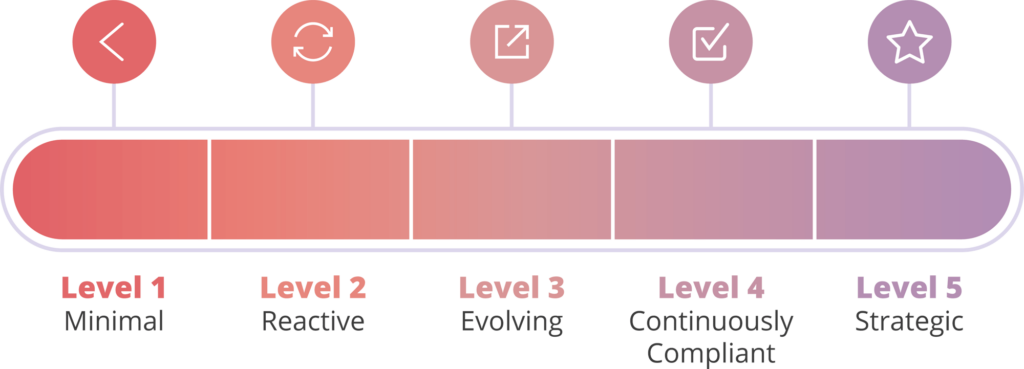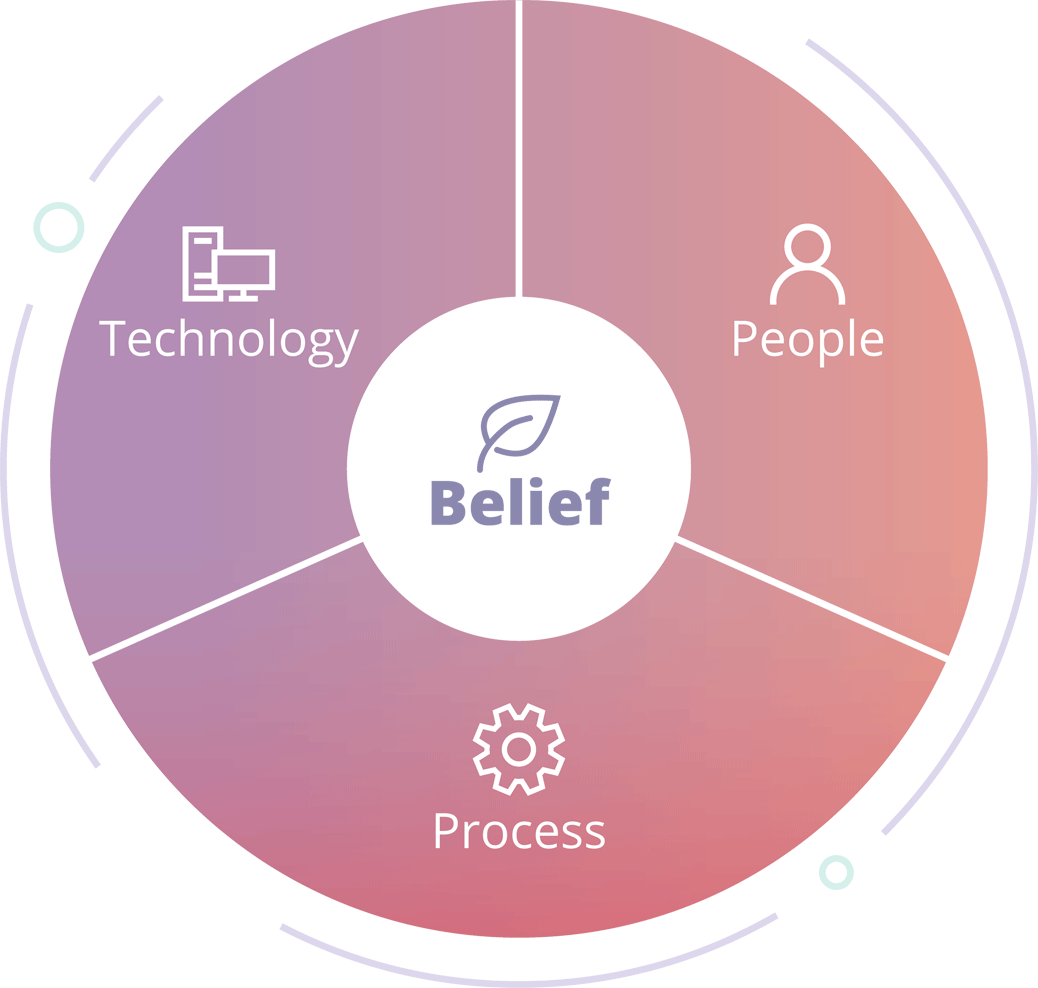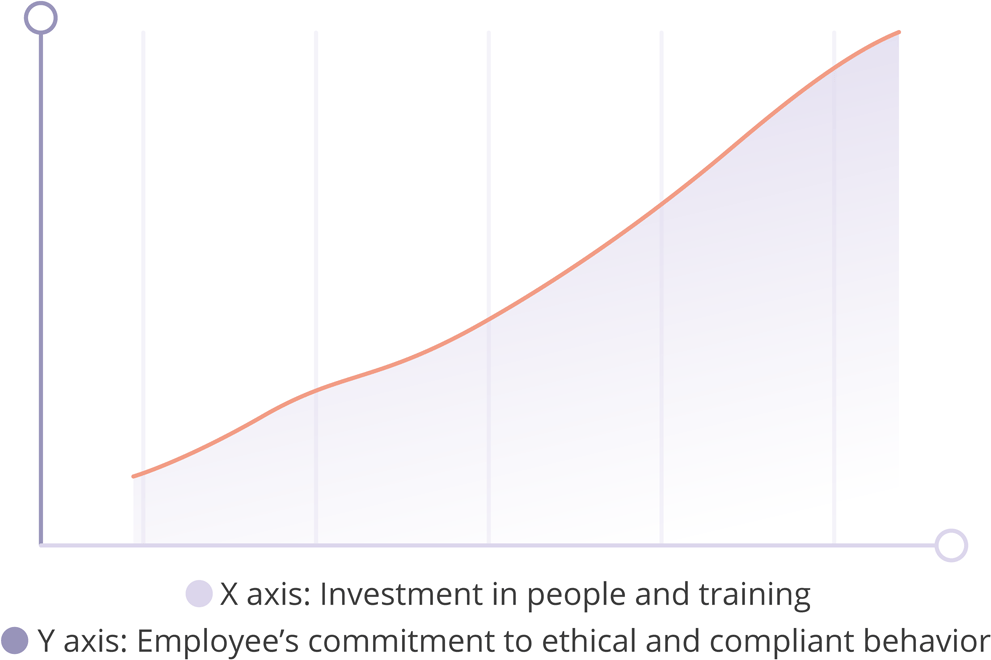Tool
The Compliance Maturity Spectrum
A tool to self-assess the maturity and health of your compliance program, plus guidance on how to evolve and mature your compliance program.
02: Compliance Maturity Spectrum: Overview
What is a level of compliance?
A level of compliance describes how mature and effective an organization’s compliance program is at a point in time – from simply checking boxes to using compliance as a strategic advantage. On this Compliance Maturity Spectrum, each level of compliance reflects how your organization thinks about compliance (beliefs) and how that mindset shows up in your people, processes, and technology.
Compliance Maturity Spectrum: Levels

Compliance Maturity Spectrum: Components

Belief
At the highest level, what differentiates one organization from another is their belief and outlook about the role of compliance within their business. Does an organization see compliance as a series of boxes they must check off, or do they see compliance playing a positive role in driving business growth?
There are five distinct beliefs or viewpoints we’ve seen from organizations we’ve talked to, and each belief corresponds to a different level of compliance on the maturity spectrum – from Minimal to Strategic:

Level 1
Minimal
Organization does not believe that compliance is important to its overall objectives.
Level 2
Reactive
Organization believes compliance is a series of boxes to check.
Level 3
Evolving
Organization believes compliance is essential to the business.
Level 4
Continuously Compliant
Organization believes that operating in a mode of continuous compliance is beneficial; strives to make improvements.
Level 5
Strategic
Organization believes that taking a strategic approach to compliance can drive a competitive advantage.
Based on our interviews, we found that organizations sit at very different levels of compliance maturity when it comes to People, Processes (Operations), and their use of Technology.
People
You can’t have an effective compliance program without investing in your people. People-related investments encompass everything from educating leadership about the role of compliance to hiring staff dedicated to running the compliance program/audits to training employees. Consider how you would answer the following questions on behalf of your organization:
Organizations with higher levels of compliance maturity invest much more in their people. That greater investment in people leads to better compliance outcomes, lowered risks and better people outcomes (e.g. greater employee engagement and better morale). However, simply adding people to the compliance team will not automatically result in a more effective compliance program.

Processes
Creating effective processes is a crucial part of a compliance program. Whether you want to enhance security or prevent fraud, developing new compliance measures will require your organization to change the way things are done. Teams with different backgrounds, skills, and mandates will need to work together. New operating procedures will need to be adopted. And as your compliance requirements go up due to new regulations or entering new markets, you will need to update your processes to keep up with requirements.
Organizations at higher levels of compliance maturity have standard processes and operating procedures in place to help them keep up with regulatory changes, respond quickly to threats, handle workloads efficiently, and ensure optimal collaboration among stakeholders across the compliance ecosystem. On the flip side, organizations with lower levels of maturity are reactive: They scramble to meet new regulations and experience a high level of stress every time they need to respond to an event (e.g. an audit or a data loss incident).
To dig deeper into how process gaps show up at each level, you can use our process-focused compliance maturity model to see what “good” looks like in day-to-day compliance operations.

Technology
Governance, risk, and compliance (GRC) technology is a crucial ingredient for organizations that want to mature their compliance program. Organizations with lower compliance maturity tend to use manual processes and a patchwork of tools to manage their compliance projects, leaving themselves vulnerable to human error, unidentified gaps in controls, and increased risks.
Organizations at higher levels use technology strategically to gain operational efficiencies, greater visibility into their operations, reduce risks, and drive down compliance costs. They use various tools and integrate them in order to gain insights into their compliance program, automate manual processes, and monitor their control environment and processes on a continuous basis.




